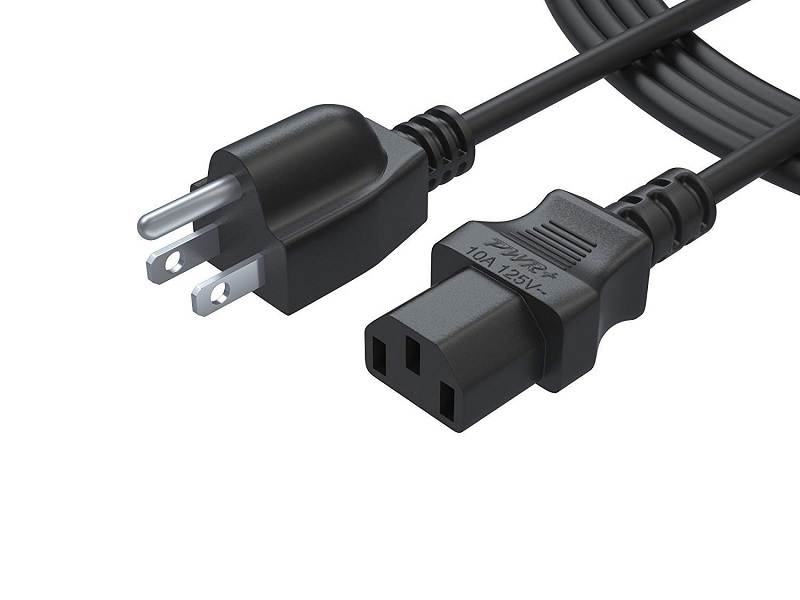Electrical Cords and Plugs: How to Replace Them

Cords, such as power cord plugs, will wear out eventually. The good news is replacing a wall plug will not take a lot of effort or skill. By repairing or replacing your plug, you will ensure that your appliances function optimally and safely.
Failure to repair or replace damaged electrical cords and plugs may cause equipment not to function optimally, if at all. Defective or damaged electrical cords and plugs can also become hazards that cause electrocutions and fires.
However, our focus here will be on replacing those electrical cords and plugs.
Electrical Cords and Plug
Both alternating and direct currents are transferred via power cords. Most power cords are made of copper wire. The copper wire material is covered in an insulating material before being encased in a non-conductive protective layer.
Types of Electrical Plugs
Self-connecting plugs are easy to snap on and usually used with lamps. Most aren’t polarized and tend to be two-pronged. Interestingly, out of all of the plugs on the market, self-connecting plugs are the simplest to replace.
Terminal screw plugs tend to have screws on the prongs and are polarized in most cases. If you wish to replace them, you should know that the process is more complicated than the process needed to replace non-polarized plugs.
Three-prong plugs are commonly used to power appliances that require more power to function. It should also be noted that three-prong plugs are polarized. They also consist of a rounded grounding prong, a smaller prong, and a larger prong.
Moreover, the round prong is designed with safety in mind, so it should never be removed to fit the plug into a different outlet.
Polarized plugs tend to have one blade that is bigger than the other. Most modern appliances have plugs that are polarized. In addition, polarized plugs will only fit into an outlet one way.
As for non-polarized plugs, both prong blades tend to be the same size in most cases. You also won’t have to flip them over to get them to fit. It should also be noted that most self-connecting plugs are non-polarized.
Steps For Replacing and Wiring a Plug
Electronic devices can become damaged over time due to environmental factors, such as temperature changes or an animal chewing through a wire.
If the device has been used for several years, shows visible signs of damage, or the device simply does not work, then replacing and wiring a plug may be an easy solution. Here’s how you can replace your plugs and wires safely:
- Slice the jacket and cut the old plug: The first thing you need to do is cut off the damaged plug and set it aside. You will then need to split and slice off the jacket about three-quarters from the end of the cord using a sharp knife. A utility knife will get the job done nicely.
Three wires are found within that you should avoid cutting. Next, strip half an inch of insulation from the end of each wire by utilizing a sturdy wire stripper.
- Connect the wires to the terminal screws: You will need to access the terminal screws found within. To do so, you will need to open your replacement plug. Next, affix each component of copper that has been exposed to its appropriate terminal screw.
The black should be attached to the brass screw, the white to the silver one, and the green to the green screw. Next, wrap the wire in a clockwise fashion around your terminal before you securely tighten every screw.
- Replace the plug and reassemble it. You will now need to reassemble your replacement plug methodically. Moreover, the screws holding it to the cord will need to be securely tightened.
- Examine the cord: The fourth and final step involves testing your cable to ensure everything is up to par. To test it, you will need to plug the cord into a 3-prong receptacle. You will then need to take a plug-in circuit tester and affix it to the other end of the cord.
Check the tester’s lights to determine if the cord is grounded and all the wires are hooked up correctly. As can be seen, a replacement plug is not an issue if you take your time and follow the steps mentioned above.
Precautions to Avoid Electrical Shock
You should avoid water without exception when working with electrical wires, cords, gadgets, and appliances. Avoid the temptation to use plugs that are broken. Avoid using damaged insulation and frayed cords to reduce the risk of electrical shock.
In addition, when you are working with electrical appliances, you should also wear safety goggles to protect your eyes from being blinded. You can also opt to wear an N95 or KN95 mask if you wish.
Insulated rubber gloves will also help protect you from possibly being electrocuted as you work. It is imperative that you only use tools that have been insulated before you begin working on any project.
Steel or aluminum ladders should also be avoided if you need to be elevated to work on a project that involves cords, wires, and plugs.
Safety First
Replacing a power cord plug will help extend the lifespan of your electronic appliances. By prioritizing safety and efficiency, your home’s gadgets will continue to function as desired.